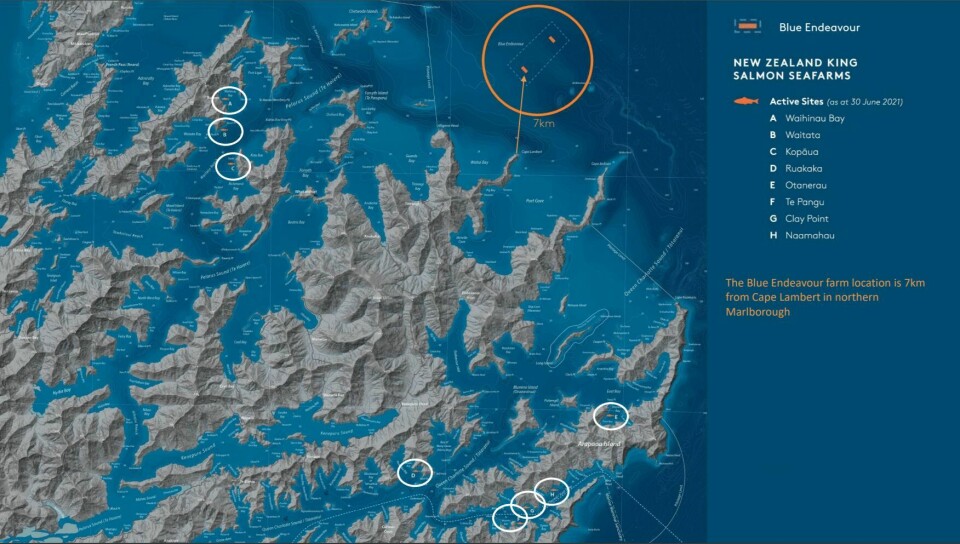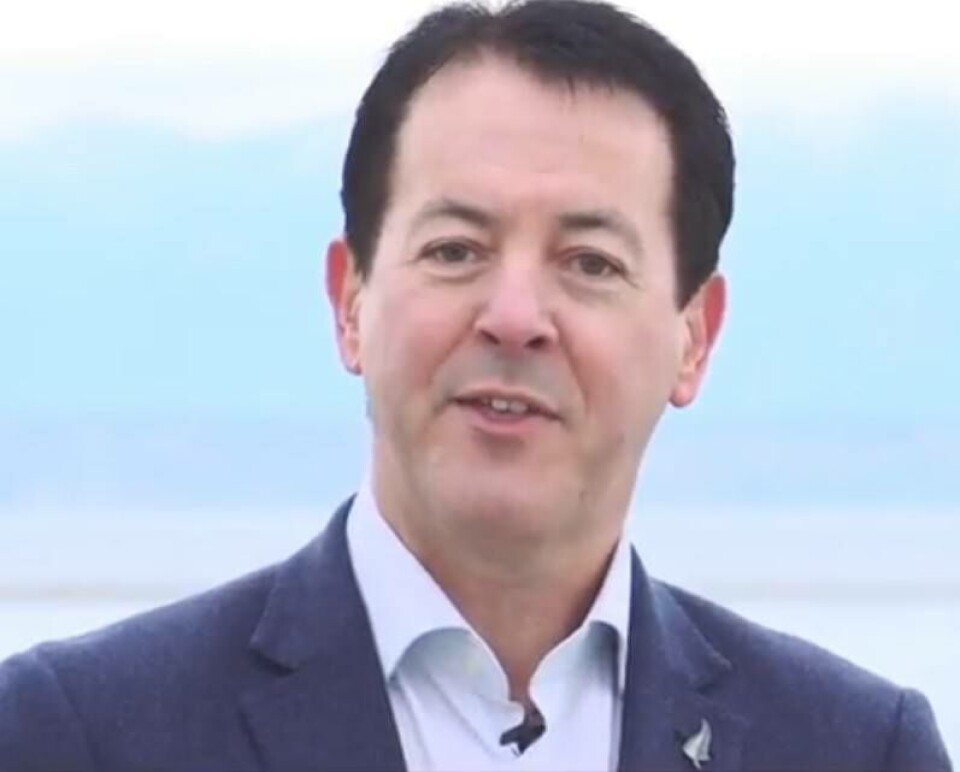
NZ salmon farmer’s offshore plan to go under microscope
Efforts by New Zealand King Salmon (NZKS) to win permission to farm 10,000 tonnes of fish in an offshore location reach a key stage later this month when the project, called Blue Endeavour, is examined at a hearing by Marlborough District Council.
The company, which currently has eight relatively sheltered sites in Pelorous Sound, Queen Charlotte Sound and Tory Channel in the north of South Island, wants to site the farm several kilometres from shore in the Cooke Strait that separates NZ’s North and South Islands.
“This project has multiple benefits - an improved environmental outcome, increase in scale, reduction in operating costs, improvements in fish health and a lift in unit values. If successful, we would expect a harvest in 2024,” said NZKS chief executive Grant Rosewarne in a press release accompanying financial results for the first half of the company’s 2022 financial year (FY22).

An exciting time
The application – which will be considered by Marlborough council from October 18-22 - is aligned with the NZ Government’s Aquaculture Strategy which was launched in late 2019 with the objective of the industry achieving NZ$3 billion (£1.53bn) revenue by 2030. It currently brings in NZ$650 million a year.
“It’s undoubtedly an exciting time for the industry as the future for salmon farming is in the open ocean,” said Rosewarne. “We will need the continued support from all levels of government and the community to achieve this. We firmly believe that aquaculture could become New Zealand’s most valuable industry and its greenest primary sector.”
NZKS sold 3,620 tonnes of king salmon (Oncorhynchus tshawytscha) in the first half of its 2022 financial year (1H22) which ran from February 1, an increase on the 2,754 tonnes sold in 1H21.
Sales revenue was NZ$80.1m, up from the NZ$67m made in 1H21, but the company reported a net loss after tax of NZ$5.6m, the same as the loss made in 1H21.
Smaller fish
NZKS said profitability had been impacted by smaller fish size, which had been an unintended consequence of its prior aquaculture model. This became apparent in February, and harvest volumes were reduced to increase fish size and rebuilt biomass.
There was high mortality in the Pelorus Sound in the first four months of 1H22, and Covid-related costs also affected profitability, with freight costs reaching NZ$3.41/kg, almost 40% higher than the NZ$2.50/kg the company paid in 1H21.
Fish size has now normalised, and NZKS is forecasting a harvest of 4,029 tonnes in 2H22.
Challenging six months
Chairman John Ryder said: “Unfortunately it’s been a challenging six months, but we have now initiated our Prescient Aquaculture Model, built on decades of farming king salmon and the experience of our own in-house team. Since the beginning of our new financial year, we have returned to demand exceeding supply.
“Our premium brands continue to show great strength in building customer relationships and supporting margin growth, focusing on diversification across categories and markets to build resilience.”
Rosewarne acknowledged it had been a tough period. “During the first four months we made losses, more than fully offset by closing out excess foreign exchange contracts. In June we were back to break even, followed by incremental gains in July of $1.3m (proforma EBITDA), continuing into 2H, with August at $1.6m.
Premium prices
“We are forecasting harvest volumes in the second half of 2022 of over 4,000 tonnes delivering the usual premium prices. We have consistently maintained prices for the core branded portfolio, even through the Covid pandemic. Excess unbranded stock, mainly whole frozen fish, continues to be sold to international customers outside of established branded channels.
“During Covid FY21 we refocused on NZ retail (with heavy price promotions) and developed additional fresh speciality and e-commerce business in the US, which helped get us through FY21.
“Now, in FY22, we have seen the return of the US foodservice sector whilst retaining the incremental fresh business to deliver improving returns.”























































